
Getting a straight answer about how your dry van shipping costs are calculated can be a real challenge. Couple in the fact that understanding this information is crucial to making the most of your budget and you may be left feeling kind of stranded in the transportation world.
Too often, shippers like you are left blind to the intricacies of the freight quoting process and frankly, this is unacceptable.
Dry van shipping is the single most prominent transportation service utilized by companies in the United States. As such, understanding what dry van shipping costs can only help shippers as they continue to send their freight inside of dry vans for what promises to be decades to come.
Here at ATS, our fleet currently consists of nearly 600 hundred dry van truckers that deliver close to 100,000 truckloads a year. Each of these shipments is priced to get the job done based on their unique needs and five factors influencing their rate-per-mile (RPM).
To gain a better understanding of these factors, influencing your dry van shipping costs, I invite you to read on as we outline everything you’ll need to know.
The five factors that impact the price you’ll pay for your dry van freight when working with ATS, and many other companies, are:
- The urgency of your shipment
- The amount of time dedicated to your freight
- Your freight’s specific requirements
- Your freight’s network fit
- The overall flexibility you allow
#1 The Urgency of Your Shipment
When it comes to securing a truck in the transportation world, there are two real bargaining chips on the table: time and money.
Mapping out the route and transport concept of a shipment — to ensure the best-fit truck is on every load — takes time.
For this reason, giving your transportation provider ample time to plan and get everything into place for your freight’s journey will help keep the costs down. With little warning, you should expect to pay higher rates to secure any needed capacity.
In this industry, “lead time” is the phrase used to denote the amount of advanced warning a transportation company is given to find a solution for their customers.
Although the amount of lead time required to save you the most money fluctuates from each shipment to the next, here are some general guidelines:
- A lead time of 48 to 72 hours before the moment your shipment needs to load is ideal.
- As your lead time dips below 48 hours, the cost of moving your freight begins to rise.
- Same-day shipments will be very costly as finding coverage becomes increasingly challenging.
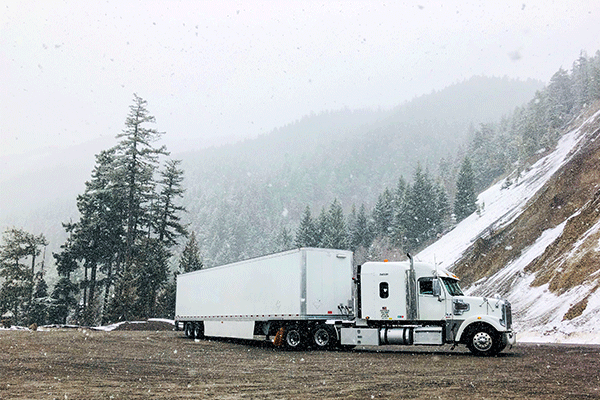
You see, trucking companies, and their truckers can run more efficiently when they plan out shipments days in advance to help them make the most of their allotted on-duty service hours. This efficiency can then be passed on to the shipper through more competitive pricing and higher service results.
And — in an industry where efficiency and planning do nothing but help shippers’ bottom lines — scrambling to fit freight onto a truck driver’s schedule will cost extra.
#2 The Amount of Time Dedicated To Your Freight
The second factor impacting your dry van freight rates is the total time commitment your provider needs to allocate to servicing your load.
In the United States, there’s always freight to move.
And, in many cases, the supply of available trucks, drivers and trailers under-paces the demand for their services. As a result, the more time your shipment takes to complete, the more money it will cost.
Since the demand for transportation services is so high, trucking companies, like ATS, are always looking for ways to increase the efficiency of their trucks. Sometimes, shipments with certain characteristics make this more difficult, increasing costs.
These costs are often added to a dry van shipment’s linehaul which rises to match the time invested by each trucker.
Let’s take a look at some things that contribute to “the amount of time dedicated to your load” and increase the price you pay.
- Rigid pick-up and delivery windows.
- Adding multiple stops to your load.
- The distance your freight needs to travel.
Rigid Pick-up and Delivery Windows
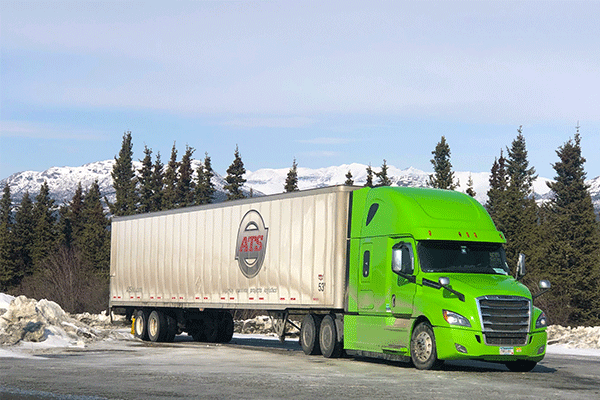
The transportation world is incredibly fast-paced. Truckers drop off a load and immediately head for their next. Shippers load a truck, wave goodbye and begin on another.
With this increased pace though, comes a decent level of sacrifice and compromise on the behalf of shippers looking to take their budgets further.
According to the Federal Motor Carrier Safety Administration (FMCSA), individuals who operate a commercial motor vehicle are only allowed to be actively on-duty for 11-hours in 24 hours.
These on-duty hours include all mandated stop-off and break periods — leaving truckers with only 10 operational hours. Hours that they want to use to the fullest degree.
Rigid pick-up windows impact a driver’s ability to make the most of their Hours of Service (HOS). And, depending on the length of haul and load/off-load times, these stricter windows can greatly extend the time spent on each load as truckers adjust to meet timeframes.
On the back-end specifically, strict delivery windows may force a trucker to layover and wait for an upcoming appointment. Once again this extends the total amount of time a truck is dedicated to your load and raises your freight rates.
Make the most of your budget by allowing some flexibility on your pick-up and drop windows. This will allow transportation companies greater efficiency in planning your truck, which in turn saves you some money as scheduling a solution becomes easier.
In the end, you’ll find that incorporating flexibility into your processes will increase the number of trucking companies willing, and able, to move your freight.
Adding Multiple Stops To Your Load
Multi-stop dry van shipments aren’t a rarity in the transportation industry as they provide a high level of convenience to the shippers that use them.
Instead of sending freight via multiple less-than-truckload (LTL) carriers, to varying locations along a central route, multi-stop shipping allows shippers a bit more visibility and quicker transit times by using a dedicated truck.
At each location, the dry van trucker in charge of freight must stop, unload any specified amount of cargo and continue to his/her next stop.
There’s simply no telling how long loading/unloading might take for each section of these multi-stop dry van loads. As such, the costs associated with these shipments need to match the amount of time spent moving them.
Multi-stop shipments inject great efficiency into the supply chains they fit. That said, every stop on your load lengthens the time they spend serving it, increasing your price.
Your Freight’s Length of Haul
Distance is the third factor that impacts the total amount of time dedicated to moving your shipment and, in turn, the final price you’ll pay.
A shipment’s length of haul (LOH) is typically broken down into these five categories in the transportation world:
- Short Haul (0 - 250 miles)
- Mid Haul(251 - 400 miles)
- Tweener (401 - 800 miles)
- Long Haul (801 - 1,200 miles)
- Extended-Long Haul (1,200+ miles)
Longer hauls mean more miles for a trucker to travel which requires a greater time commitment to your freight.
And, in many cases, most of their on-duty hours — especially for extended hauls (which can take upwards of a week) — are being used on your load. In turn, for your provider, the time and resources committed to your supply chain — resources that could be used elsewhere — must be justified financially. As such, if a truck is used for many days, expect to pay an increased rate to “lock up” that asset.
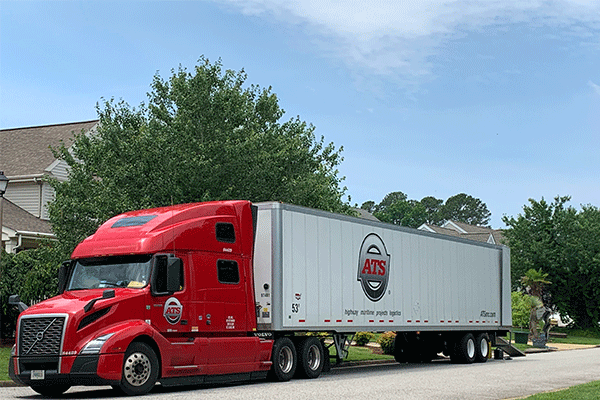
Concerning shorter lengths of haul (0-400 miles) — where a trucker can reach your destination in a matter of hours — a separate rate applies.
When accounting for loading, transit and unloading times, these shorter dry van hauls typically amount to an entire day’s work for the driver.
As a result, minimum/day rates are usually tacked on to these shipments so each trucker is adequately compensated for their efforts.
Since LOHs measuring between 500 and 600 miles take a driver more than one day to cover, these loads are offered at a higher price point than a single day’s haul would dictate.
Sure, a trucker could pick up a load at 7 a.m. and arrive at your destination — 540 miles away — for unloading at 4 p.m. but this is rarely the case.
Traffic, weather, road construction and their company safety standards (extremely important to ATS) — along with other impediments — can make it nearly impossible to fully accomplish hauls of 500-600 miles in a single day.
To combat this, transportation providers will often look at daily and/or weekly allocation of their driver’s on-duty hours when calculating the price of the load.
Want to save some money?
When these factors work in your favor, keeping your load from trickling over into an additional day, your rates will be lower. But should these factors extend into what becomes additional time-spend for your driver, expect to see this reflected in your rates.
To maximize your budget — as it relates to the amount of time spent on your load — you’ll need to practice vigilance.
Keep in mind the impact of holding to rigid loading and unloading timeframes, ask your provider how multiple stops and your length of haul will impact your price. By working with your provider to trim time off of the overall commitment your load requires, you’ll save money.
#3 Your Freight’s Specific Requirements
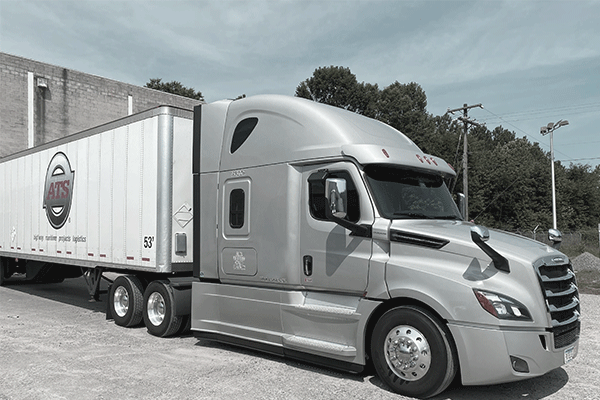
There are a wide variety of services available to make your life, as a dry van shipper, easier.
Services like drop trailers increase load-time flexibility, pad and blanket wrapping keep fragile freight safe and white-glove deliveries make the offloading process pain-free.
And you know what? The fun doesn’t stop there. Dry van shippers around this nation utilize all kinds of services for their freight. Each service brings them value while also increasing their final payment.
As such, should your freight need special handling, expect to pay for these conveniences.
For example, requiring a drop trailer — especially for an extended period ( 2+ days) — will add to your costs. Every day that a drop trailer is “tied up” is a day that it’s not on the road.
And longer detention time — as we call it — puts your provider in a bit of a pickle, increasing the truck to trailer ratio needed to keep their fleet operating while a trailer is detained.
These trucking assets are in high demand and tying them to your supply chain for an allotted section of time will raise your freight rates.
Here at Anderson Trucking Service, we offer many dry van services to add value to our customers. That said, each of these services comes at a price.
#4 Your Freight’s Network Fit
When working with a specific transportation company, like ATS, the degree to which your needs correlate with their capabilities and strengths is another factor influencing your rates.
Does your shipment originate in an area where your provider has a strong presence? Will your destination make it easy for your carrier to find their next load? Can your provider pinpoint many solutions for your freight or only a few?
The answer to these, and questions like these, will indicate the level to which your shipment “fits” your transportation partner’s network and capabilities.
For example:
The ATS vans fleet has a heavy concentration of dry van truckers located east of the Mississippi River. This makes providing a truck for shippers located from Minnesota to New Jersey far easier — and therefore cheaper — than doing so in Arizona.
That said, getting an asset truck at a pick-up point with less density will increase a shipper’s RPM in these areas. Deadhead costs — which are often billed to the shipper — can add up.
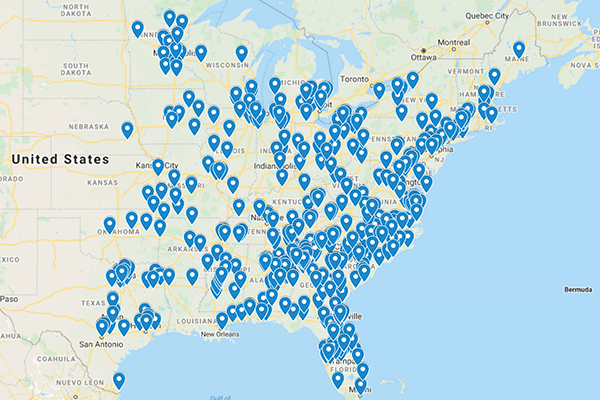
Loads that aren’t a great network fit for their provider often require deadhead miles and may even put your load at risk if/when a recovery option — such as a “re-power” — is needed.
Looking for carriers whose network is similar to yours will help keep your shipping costs down and help ensure coverage/capacity in times of recovery.
The same can be said for shipments going into areas where your trucking company’s presence is lacking.
Often, carriers don’t provide as much capacity into these regions as they would in others where their network is strong. This leaves these trucking companies with less of a customer base for backhaul freight (freight to haul back to their “home-base”) or loads to move out of your destination.
Without freight to haul out of your end-point, trucking companies may have a difficult time finding their driver’s next load. And, shipments to locations that a company is less familiar with can equate to increased rates for the shippers sending them to these areas.
As such, you should expect your rate-per-mile to increase substantially if it simply doesn’t fit your provider’s infrastructure.
To understand your carrier’s network better, and avoid this issue, ask for your provider’s driver domicile and network concentration maps. This will help provide you a quick visual of whether each prospective partner is truly a network fit for your needs. If they are, this should help keep your costs down.
#5 The Overall Flexibility You Allow
Flexibility can get you a long way in the trucking world. If you were to do nothing but add flexibility in equipment type, on your pickup windows and what type of solution you accept, your budget would see a bump.
The key for most transportation providers is efficiency in planning their trucks.
As such, the more flexibility you provide the better. Greater flexibility will provide more efficiency in truck movement for your provider, leading to more favorable pricing and better service outcomes for you.
At the end of the day, shipping price comes back to the supply of available trucking solutions and the demand for their services. If there is more demand for trucks than trucks available — like in recent years — the price of finding one goes up.
By limiting your options to “only asset trucks” your options for coverage and recovery are limited. These limitations may negatively impact the level of service you receive and drive your price up. Too often, shippers lose money simply by failing to open themselves to their greatest possible pool of options.
As their number of viable solutions decreases, the rate-per-mile each of these shippers’ pay, tends to increase.
Allowing your provider, like ATS, to reach out to their fully vetted partner carrier network allows for the expansion of your potential options and your level of service to be protected.
Sure, it can be nerve-racking to try a brokered carrier for the first time. But your transportation partner’s expertise likely extends beyond their asset fleet.
Dry Van Shipping Doesn’t Need To Break The Bank
Here at ATS, we do everything we can to help our customers flourish. And, given the opportunity, we’d like to help you reach your goals as well.
In an industry where timing is everything, you need a provider that will help you understand your freight rates, make the most of your budget and price your freight to execute each and every time.
Now that you understand the factors that impact the price of dry van shipping with ATS, you’re ready to receive your unique rate!
Request a quote today and get a no-strings-attached freight rate based on the factors listed above.
And, whenever you’re ready to add a dedicated shipping partner to your supply chain, a partner with decades of expertise moving dry van goods, contact us. We’re more than happy to help you in any way we can.

